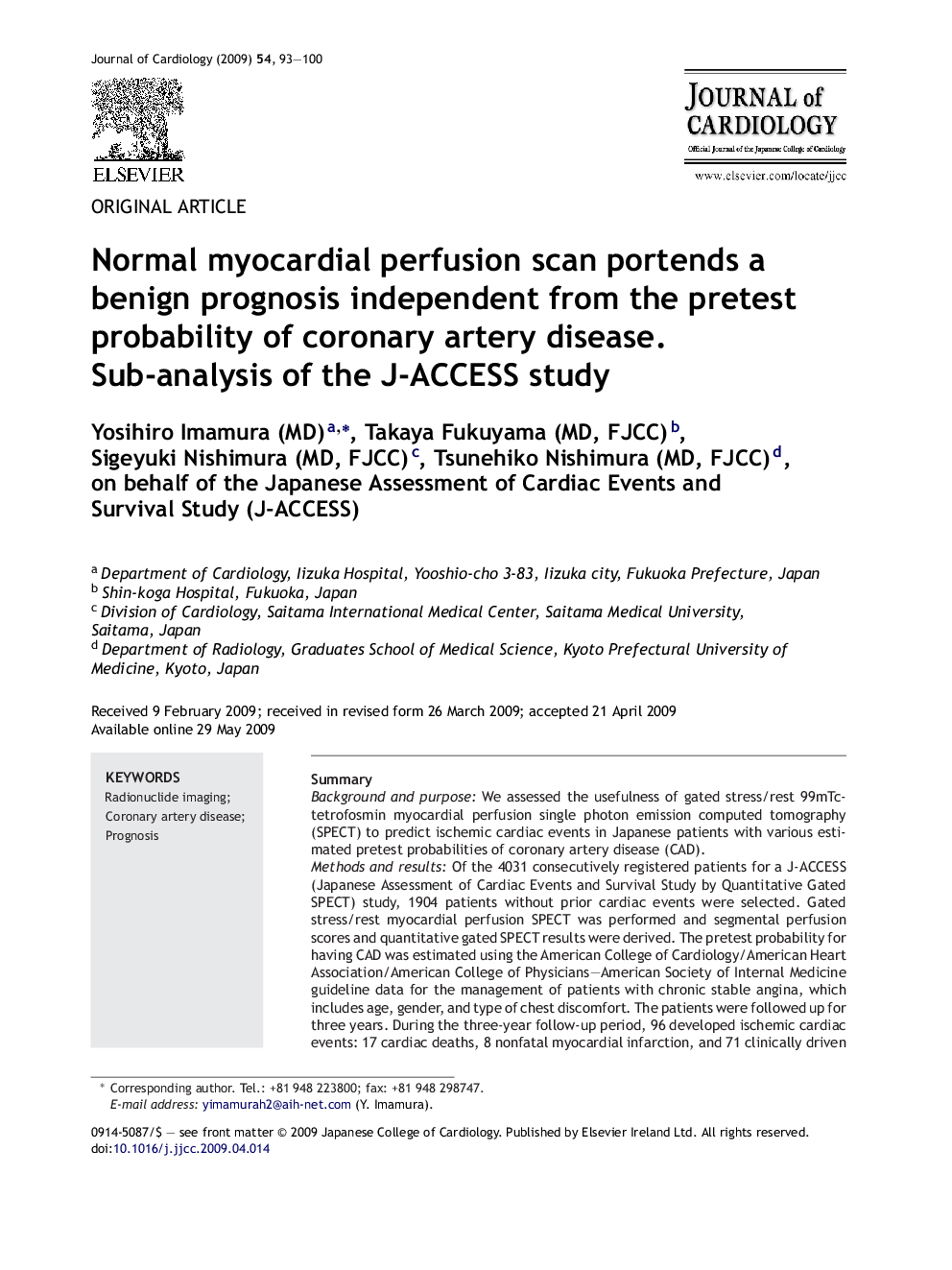| Article ID | Journal | Published Year | Pages | File Type |
|---|---|---|---|---|
| 2963754 | Journal of Cardiology | 2009 | 8 Pages |
SummaryBackground and purposeWe assessed the usefulness of gated stress/rest 99mTc-tetrofosmin myocardial perfusion single photon emission computed tomography (SPECT) to predict ischemic cardiac events in Japanese patients with various estimated pretest probabilities of coronary artery disease (CAD).Methods and resultsOf the 4031 consecutively registered patients for a J-ACCESS (Japanese Assessment of Cardiac Events and Survival Study by Quantitative Gated SPECT) study, 1904 patients without prior cardiac events were selected. Gated stress/rest myocardial perfusion SPECT was performed and segmental perfusion scores and quantitative gated SPECT results were derived. The pretest probability for having CAD was estimated using the American College of Cardiology/American Heart Association/American College of Physicians–American Society of Internal Medicine guideline data for the management of patients with chronic stable angina, which includes age, gender, and type of chest discomfort. The patients were followed up for three years. During the three-year follow-up period, 96 developed ischemic cardiac events: 17 cardiac deaths, 8 nonfatal myocardial infarction, and 71 clinically driven revascularization. The summed stress score (SSS) was the most powerful independent predictor of all ischemic cardiac events (hazard ratio 1.077, CI 1.045–1.110). Abnormal SSS (>3) was associated with a significantly higher cardiac event rate in patients with an intermediate to high pretest probability of CAD. Normal SSS (≦3) was associated with a low event rate in patients with any pretest probability of CAD.ConclusionsMyocardial perfusion SPECT is useful for further risk-stratification of patients with suspected CAD. The abnormal scan result (SSS > 3) is discriminative for subsequent cardiac events only in the groups with an intermediate to high pretest probability of CAD. The salient result is that normal scan results portend a benign prognosis independent from the pretest probability of CAD.
